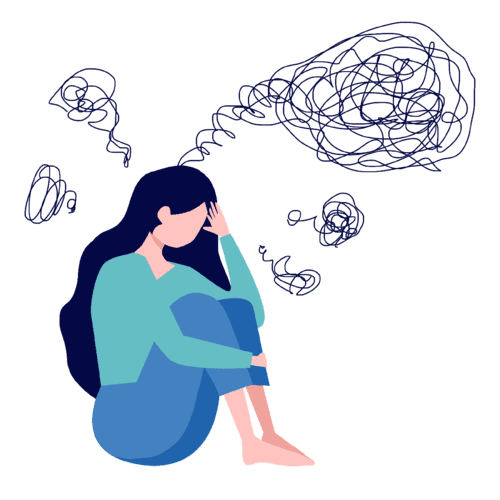What Part Of The LGBTQ Community Am I ?
What Part Of The LGBTQ Community Am I ?

What is LGBT Community Test?
An LGBT Community Test is a systematic evaluation of the needs, challenges, and strengths of the lesbian, gay, bisexual, and transgender (LGBT) community within a specific geographic area or social context. It aims to gather data on various aspects, including healthcare access, discrimination, mental health, housing, and social support. This assessment helps identify disparities and barriers faced by LGBT individuals and informs the development of targeted policies, programs, and services to address these issues. By understanding the unique experiences and requirements of the LGBT community, stakeholders can work towards creating a more inclusive and equitable society that respects and supports diverse sexual orientations and gender identities.
Who can benefit from this LGBT Community Test?
The LGBT Community Test can benefit a wide range of stakeholders, including policymakers, healthcare providers, educators, advocacy groups, and community members. Policymakers can use the assessment to inform inclusive policies and legislation that protect the rights of LGBT individuals. Healthcare providers can tailor their services to address the unique healthcare needs of this community. Educators can develop more inclusive curricula and support systems. Advocacy groups can use the data to advocate for equality and raise awareness. Community members themselves can gain a better understanding of their own needs and mobilize for positive change. In essence, the assessment serves as a valuable tool for promoting social justice, equity, and inclusivity for the LGBT community.
LGBT Community Test Accuracy
Assessing the accuracy of the LGBT community’s needs and experiences requires a nuanced approach. It involves collecting comprehensive data through surveys, interviews, and community engagement to understand their unique challenges. However, accuracy can be compromised due to underreporting or discrimination-related concerns. Ensuring anonymity and inclusivity in data collection is crucial. Furthermore, ongoing research and open dialogue with the community are necessary to adapt and improve assessments over time. Ultimately, the accuracy of such assessments depends on the quality of data collection methods, cultural sensitivity, and a commitment to addressing the diverse needs and experiences within the LGBT community.
Types of LGBT Community Test
Health and Wellness Test:
This type of assessment focuses on the physical, mental, and emotional health of LGBT individuals. It may examine issues such as access to healthcare, mental health disparities, substance abuse, and HIV/AIDS prevalence within the community.
Social and Support Services Test:
This assessment examines the availability and accessibility of social services, support groups, and resources for LGBT individuals. It helps identify gaps in services and areas where additional support is needed.
Housing and Homelessness Test:
This type of assessment looks into the housing needs and challenges faced by LGBT individuals, including the risk of homelessness, discrimination in housing, and access to safe and inclusive housing options.
Education and Youth Services Test:
Focusing on the educational experiences of LGBT youth, this assessment examines issues like bullying, discrimination, and the availability of supportive programs in schools. It can also assess the needs of LGBT students in higher education.
Workplace and Employment Test:
This assessment evaluates workplace environments, including issues related to discrimination, harassment, and lack of diversity and inclusion. It can help identify strategies to create more inclusive workplaces.
Legal and Policy Test:
This assessment focuses on the legal and policy landscape affecting LGBT individuals, including anti-discrimination laws, hate crime legislation, and policies related to gender identity and sexual orientation.
Handling LGBT Community Issues
Handling LGBT (Lesbian, Gay, Bisexual, and Transgender) community issues requires a thoughtful and inclusive approach that promotes equality, respect, and understanding. Here are some key principles and steps to consider:
Educate Yourself: Begin by educating yourself about LGBT issues, terminology, and the challenges faced by this community. Understanding the experiences and perspectives of LGBT individuals is crucial for effective advocacy.
Promote Inclusivity: Create an inclusive and safe environment in your community, workplace, or organization. This includes adopting gender-neutral language, providing gender-neutral restrooms, and ensuring anti-discrimination policies that protect LGBT individuals.
Advocate for Legal Rights: Support policies and legislation that protect the rights of LGBT individuals. This includes advocating for anti-discrimination laws, marriage equality, and legal recognition of gender identity.
Raise Awareness: Use your platform or resources to raise awareness about LGBT issues. This can be done through educational campaigns, social media, or events that promote understanding and acceptance.
Support Mental Health: Recognize the mental health challenges that LGBT individuals may face due to discrimination and social stigma. Encourage access to mental health services and create safe spaces for open discussions.
Respect Privacy: Respect individuals’ privacy regarding their sexual orientation and gender identity. Do not pressure anyone to disclose their identity unless they are comfortable doing so.
Allyship: Be an ally to the LGBT community by actively supporting and standing up for LGBT individuals when they face discrimination or harassment. Listen to their experiences and offer your support.
Provide Resources: Offer resources and support for LGBT individuals and their allies. This could include access to LGBT organizations, counseling services, or community groups.
Cultural Competency Training: Provide training for staff and community members to increase their cultural competency when interacting with LGBT individuals. This can help reduce misunderstandings and promote respect.
Promote Representation: Encourage representation of LGBT individuals in media, politics, and other areas of public life. Visibility can help challenge stereotypes and create positive role models.
Celebrate Pride: Participate in Pride events and celebrations to show your support for the LGBT community. These events are often opportunities for advocacy and solidarity.
Listen and Learn: Actively listen to the experiences and needs of LGBT individuals. Engage in dialogue to better understand their unique challenges and perspectives.
Combat Bullying: Take a strong stance against bullying, especially in educational settings. Implement anti-bullying policies and programs that address LGBT-specific issues.
Support Transgender Individuals: Be particularly aware of the challenges faced by transgender individuals, including legal recognition, healthcare access, and acceptance. Advocate for transgender rights and healthcare access.
Engage in Outreach: Reach out to local LGBT organizations and community leaders to collaborate on initiatives and learn about specific needs within the community.
Remember that creating a more inclusive and accepting society for the LGBT community is an ongoing process that requires continuous effort. It’s essential to be open, empathetic, and willing to adapt your approach as needed to ensure the well-being and equal treatment of LGBT individuals.

